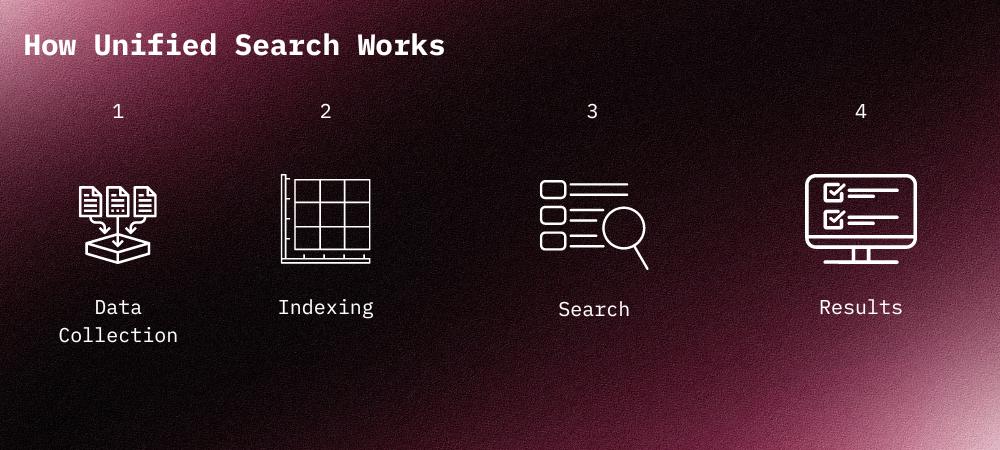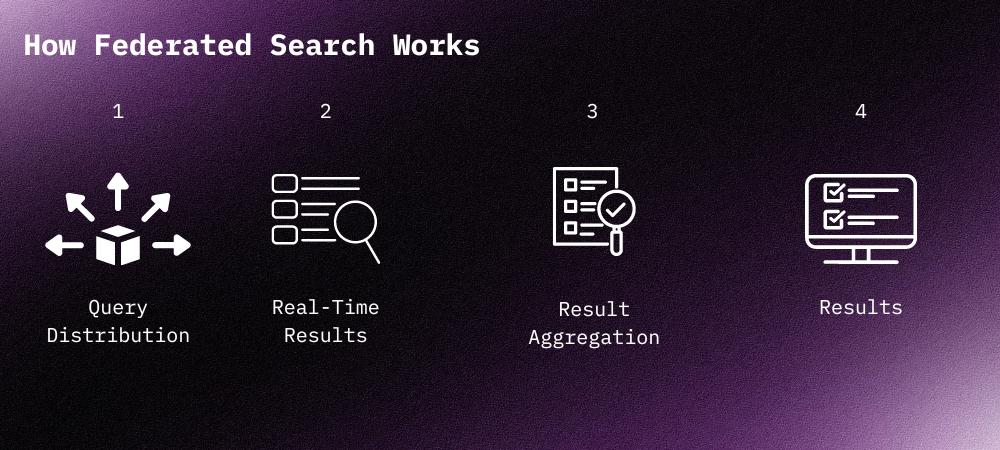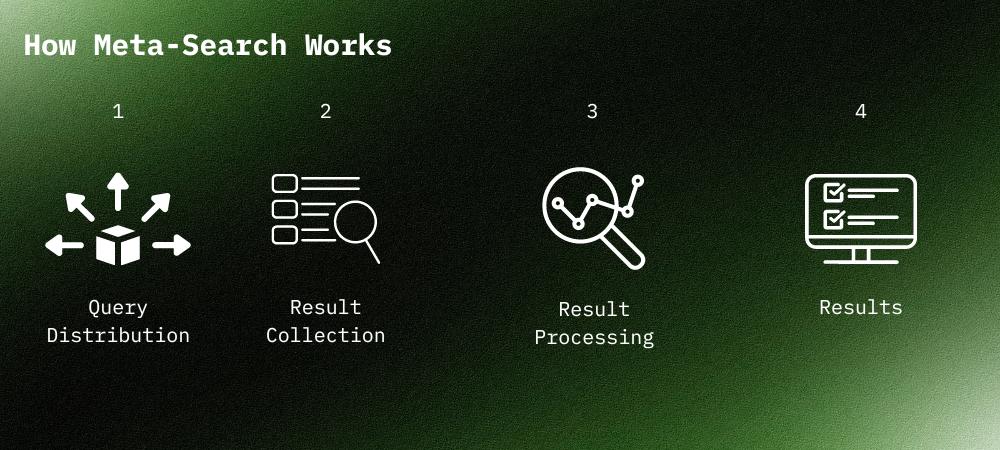Efficient information retrieval is crucial for businesses and individuals. With data scattered across various platforms and sources, selecting the right search technology can significantly impact productivity and decision-making. This article explains the differences between three popular search approaches: unified search, metasearch, and federated search. Understanding these technologies will help you choose the most suitable solution.
What is Unified Search?
Unified search is an information retrieval system that indexes and searches across multiple data sources, presenting results from a single unified index. This approach creates a centralized information repository, allowing quick and comprehensive searches across various data silos within an organization.
How Unified Search Works

- Data Collection: The system gathers information from various sources such as databases, file systems, and cloud storage.
- Indexing: It creates a central index of all collected data for efficient retrieval.
- Search: When a user performs a search, the system queries this unified index.
- Result Presentation: The search results appear in a single, coherent interface.
Use Cases for Unified Search
Unified search is handy in enterprise applications where data is often siloed across different departments. For example, a large corporation might use unified search to allow employees to access information from HR databases, project management tools, and customer relationship management (CRM) systems simultaneously.
Advantages of Unified Search
- Speed: Pre-indexing allows for rapid search results.
- Comprehensive Results: Users can access information from multiple sources in one place.
- User-Friendly Experience: A single search interface simplifies the user experience.
- Improved Relevance: Unified indexing allows for better relevance ranking across all data sources.
Challenges of Unified Search
- Regular Index Updates: The central index must be updated frequently to ensure data accuracy.
- Privacy Concerns: Data centralization may raise security and privacy issues.
- Initial Setup Complexity: Implementing a unified search system can be resource-intensive.
What is Federated Search?
Federated search queries multiple independent data sources simultaneously, returning results in real time. Unlike unified search, federated search doesn’t rely on a central index but sends live queries to connected data sources.
How Federated Search Works

- Query Distribution: When a user initiates a search, the system sends the query to multiple pre-configured data sources.
- Real-Time Results: Each data source processes the query independently and returns its results.
- Result Aggregation: The federated search engine combines and often de-duplicates the results from various sources.
- Presentation: The aggregated results appear to the user in a unified interface.
Use Cases for Federated Search
Federated search is helpful in environments with diverse and decentralized data sources. It’s commonly used in academic research, where libraries and institutions must search multiple databases and repositories. Large enterprises with complex data ecosystems also benefit from federated search capabilities.
Advantages of Federated Search
- Simple Setup: No need to create and maintain a central index.
- Real-Time Data: Results always reflect the most current information from each source.
- Diverse Data Sources: Ability to search across varied and distributed repositories.
- Data Sovereignty: Each data source maintains control over its information.
Challenges of Federated Search
- Slower Performance: Real-time queries can lead to longer wait times for results.
- Incomplete Coverage: Some data sources may be unavailable or slow to respond.
- Result Inconsistency: Different data sources may return results in varying formats.
- Security Concerns: Decentralized data management can complicate security measures.
What is Metasearch?
Metasearch aggregates results from multiple search engines and presents them in a unified interface. This approach provides a comprehensive view of search results from various sources.
How Metasearch Works

- Query Distribution: The metasearch engine simultaneously sends the user’s query to multiple search engines.
- Result Collection: It gathers the results returned by each search engine.
- Result Processing: The metasearch engine may remove duplicates, rerank results, or apply additional filters.
- Presentation: The processed results appear to the user in a coherent interface.
Use Cases for Metasearch
Metasearch is widely used in the travel industry, where engines like Kayak or Skyscanner aggregate results from various booking sites. It’s also popular in academic research, where tools like Google Scholar combine results from multiple scholarly databases.
Advantages of Metasearch
- Comprehensive Results: Users can compare results from different sources easily.
- Time-saving: Eliminates the need to search multiple engines individually.
- Improved Relevance: Metasearch can often provide more relevant information by combining results.
- Specialized Searches: These can be customized for specific industries or types of information.
Challenges of Metasearch
- Result Consistency: Different search engines may return varied results, making integration challenging.
- Dependence on External Sources: The quality of results depends on the reliability of the underlying search engines.
- Potential for Bias: The metasearch engine’s algorithm for combining results can introduce bias.
- Legal and Ethical Considerations: Using results from other search engines may raise copyright and fair use issues.
Comparing the Technologies
Unified vs. Federated Search
- Data Handling: Unified search uses a single index, while federated search queries multiple sources in real-time.
- Performance: Unified search is generally faster due to pre-indexing, whereas federated search can be slower due to real-time queries.
- Scalability: Unified search scales well with data growth, but federated search may need help with performance as more sources are added.
Unified vs. Metasearch
- Result Consistency: Unified search provides more consistent results from a single index, while metasearch may show varied results depending on the search engines queried.
- Complexity: Unified search is generally more complex but provides more refined control over data and search parameters.
Federated vs. Metasearch
- Data Sources: Federated search typically queries specific, often internal, data sources, while metasearch targets external search engines.
- User Experience: Federated search offers a unified interface for internal queries, whereas metasearch is typically used for broader, external searches.
Conclusion
Selecting the right search technology depends on your specific needs and data architecture:
- Unified Search: Ideal for organizations with diverse internal data sources that require fast, comprehensive searches.
- Federated Search: Best for environments with decentralized, real-time data needs across multiple independent sources.
- Metasearch: Suitable for aggregating results from external search engines, particularly in specialized fields like travel or academic research.
When choosing a search technology, consider your organization’s data structure, search requirements, and user needs. Each approach has strengths and challenges; the right choice can significantly improve your information retrieval capabilities and overall productivity.